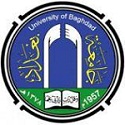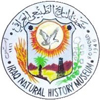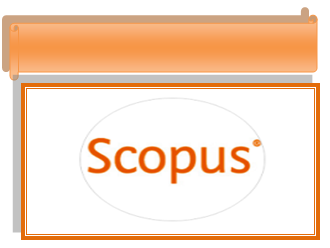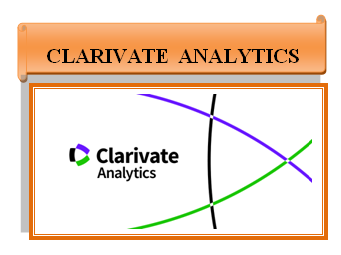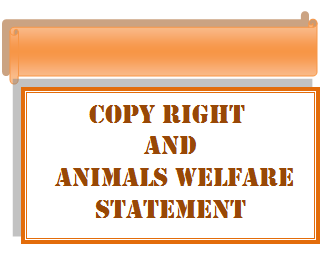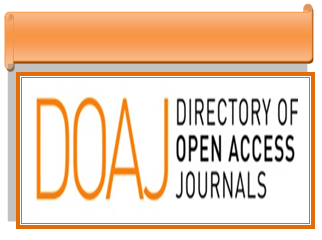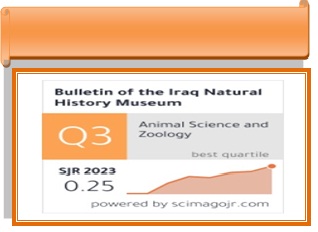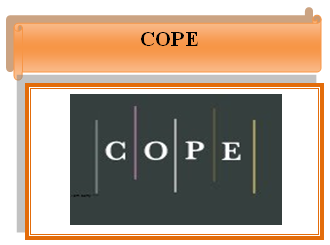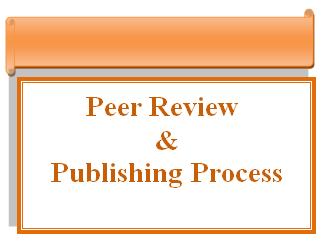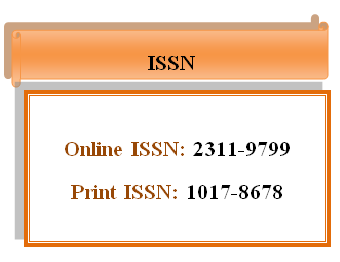BIODIVERSITY STUDY OF ZOOPLANKTON IN SELECTED BAHR Al-NAJAF DEPRESSION, NAJAF GOVERNORATE, IRAQ
DOI:
https://doi.org/10.26842/binhm.7.2019.15.3.0263Keywords:
Al-Najaf, Bahr, Biological, Indicators, ZooplanktonAbstract
The current study aims to assess zooplankton diversity in Bahr Al-Najaf depression using diversity index, specimens were collected from five sites at Bahr Al-Najaf depression, Iraq during April 2017 to March 2018.
Forty-eight taxa of zooplankton were identified including 26 taxa to Copepoda, 17 taxa belonged to Rotifers and 5 taxa to Cladocera: Copepoda was the most dominant group (54.2%); Rotifera comprised (35.4%); Cladocera comprised (10.4%).
Relative abundance index of zooplankton showed Copepodite and nauplii of Harpacticoid, Hexarthra mira, Daphnia sp., Harpacticoid sp., and Copepodite and nauplii of Cyclops were more abundant. According to the constancy index, the Copepodite and nauplii of Harpacticoid, nauplii Cyclops, nauplii stage and Hexarthra mira can be considered as the most frequent; Shanon-Weiner diversity index values of zooplankton recorded less value 0.48 in August 2017 at site (5); while the higher value was recorded in April 2017 at site (2) was 2.42; the higher value of species richness index was recorded in April 2017 at site (2) which was (7.2), the higher value of species uniformity index was recorded in February at site (2) and March at site (1) (0.61).
The present study concluded that Copepoda was the most abundant of zooplankton with variations in zooplankton species (density and from month to another).
Downloads
References
Ahmed, H., Hoda, S., Häder, D. and Donat, P. 2011. Monitoring of waste water samples using the ecotox biosystem and the Flagellate Alga Euglena gracilis. Water Air Soil Pollution, 216: 547–560. doi:10.1007/s11270-010-0552-
Allan, J. D. 1975. The distributional ecology and diversity of benthic insects in cement Creek. Colorado. Ecology, 56: 1040-1053.
Al‐Saffar, M. T. 2006. Interaction between the environmental variables and benthic macroinvertebrates community structure in Abu Zirig Marsh, Southern Iraq, M. Sc. Thesis, Collage of Science, University of Baghdad,156pp.
Al-Taee, I. A. A. 2017. Algal community, composition and its relation with some environmental variable in Bahr Al-Najaf–Iraq. PhD. Thesis, University of Kufa,112pp.
Al-Zurfi,S.K.L., Shabaa,S. H., Tsear, A. A. 2019. Assessment of physicochemical parameters and some of heavy metals in Bahr Al-Najaf-Iraq. Plant archives, 19 (1). (Accepted for publication).
Badsi, H., Ali, H. O., Loudiki, M., El Hafa, M. , Chakli, R. and Aamiri, A. 2010. Ecological factors affecting the distribution of zooplankton community in the Massa Lagoon (Southern Morocco). African Journal of Environmental Science and Technology, 4(11): 751-762
Dhanpathi, M. V. 2000. Taxonomic notes on the rotifers from India (from 1989 – 2000). Indian Association of Aquatic Biologists (IAAB), Hyderabad. (Andhra Pradesh), India,175pp.
Edmondson, W. T. 1959. Freshwater Biology 2nd Ed. John Willey and Sons, Inc., New York, 1284 pp .
Floder, S. and Sommer, U. 1999. Diversity in plankton communities: An experimental test of the intermediate disturbance hypothesis. Limnology and Oceanography, 44(4): 1114-1119.
Goel, P. K. 2008. Water pollution. Causes, effects and control. 2nd edition. Reprint, New Age international (P) Limited, Publishers, New Delhi,418pp.
Gretchen, K. B., Martin, G. and Kevin, V. B. 2006. Toxicity of silver, zinc, copper, and nickel to the copepod Acartia tonsa exposed via a phytoplankton diet. Journal Environmental Science and Technology, 40: 2063–2068.
Hampton, S. E. and Gilbert, J. J. 2001. Observations of insect predation on rotifers Hydrobiologia, 446:115-121.
Hofman, W. 1977. The influence of abiotic factors on population dynamics in planktonic rotifers. Archiv für Hydrobiologie–Beiheft Ergebnisse der Limnologie, 8: 77-83.
Ismail, A. H., and Adnan, A. A. M. 2016. Zooplankton composition and abundance as indicators of eutrophication in two small man-made lakes. Tropical life sciences research, 27(supp1) :31-38
Lampert, W. and Sommer, U. 1997. Limnoecology: the ecology of lakes and streams. Oxford University Press, New York, 313pp.
Magurran, A. E. 2004. Measuring Biological Diversity. Blackwell Publishing, Oxford, 256 pp.
Neves, I. F., Rocha, O., Roche, K. F. and Pinto, A. A. 2003. Zooplankton community structure of two marginal lakes of the river Cuiabá (Mato Grosso, Brazil) with analysis of Rotifera and Cladocera diversity. Brazilian Journal of Biology, 63(2):329-343.
Omori, M. and Ikeda, T. 1984. Methods in marine zooplankton ecology. John Wiley and Sons, Inc. New York, 256pp.
Panwar, S. and Malik, D. S. 2015. Zooplankton diversity, species richness and their distribution pattern in Bhimtal Lake of Kumaun Region, (Uttarakhand). Hydrology Current Research, 7(1): 219. doi:10.4172/2157-7587.1000219.
Petersen, F. D., Papa, S. R. and Mamaril, A. C. 2010. To the Philippine freshwater zooplankton. University of Santo Tomas, Manila, Philippines, 330 pp.
Porto-Neto, V. F. 2003. Zooplankton as bioindicator of environmental quality in the Tamandane Reff System (Pernambnco- Brazil): Anthropogenic influences and interacts with mangroves. Ph. D. Thesis, Universität Bremen, Brazil, 123pp.
Rabee, A. M. 2010. The effect of Al-Tharthar-Euphrates Canal on the quantitative and qualitative composition of zooplankton in Euphrates River. Journal of Al-Nahrain University, 13: 120-128.
Rabee , A. M. 2015. Abundance and diversity of zooplankton communities in the littoral waters of Al-Habbaniya Lake, Iraq. Journal of Al-Nahrain Universitg,18 (2):114-124.
Rasheed, K. A., Flayyh, H. A. and Dawood, A. T. The biological indicators studies of zooplankton in the Tigris River at the city of Baghdad. International Journal of Environment, Agriculture and Biotechnology, 2 (1): 138-148.
Serafim, J. M., Lansac-Tôha, F. A., Paggi, J. C., Velho, L. F. M. and Robertson, B. 2003. Cladocera fauna composition in a river-lagoon system of the upper Paraná River floodplain, with a new record for Brazil. Brazilian Journal of Biology, 63(2):349-356.
Shurin, J. 2000. Dispersal limitation, invasion resistance, and the structure of pond zooplankton communities. Ecology, 81: 3074-3086.
Smith, D. G. 2001. Pennak's Freshwater invertebrates of the United States. 4th ed., John Willey and Sons, Inc. New York, 538 pp.
Solomon, S. G. Ataguba, G. A. and Baiyewunmi, A. S. 2009. Study of dry season zooplankton of lower River Benue at Makurdi, Nigeria. Journal of Animal and Plant Sciences, 1(3): 42-50.


